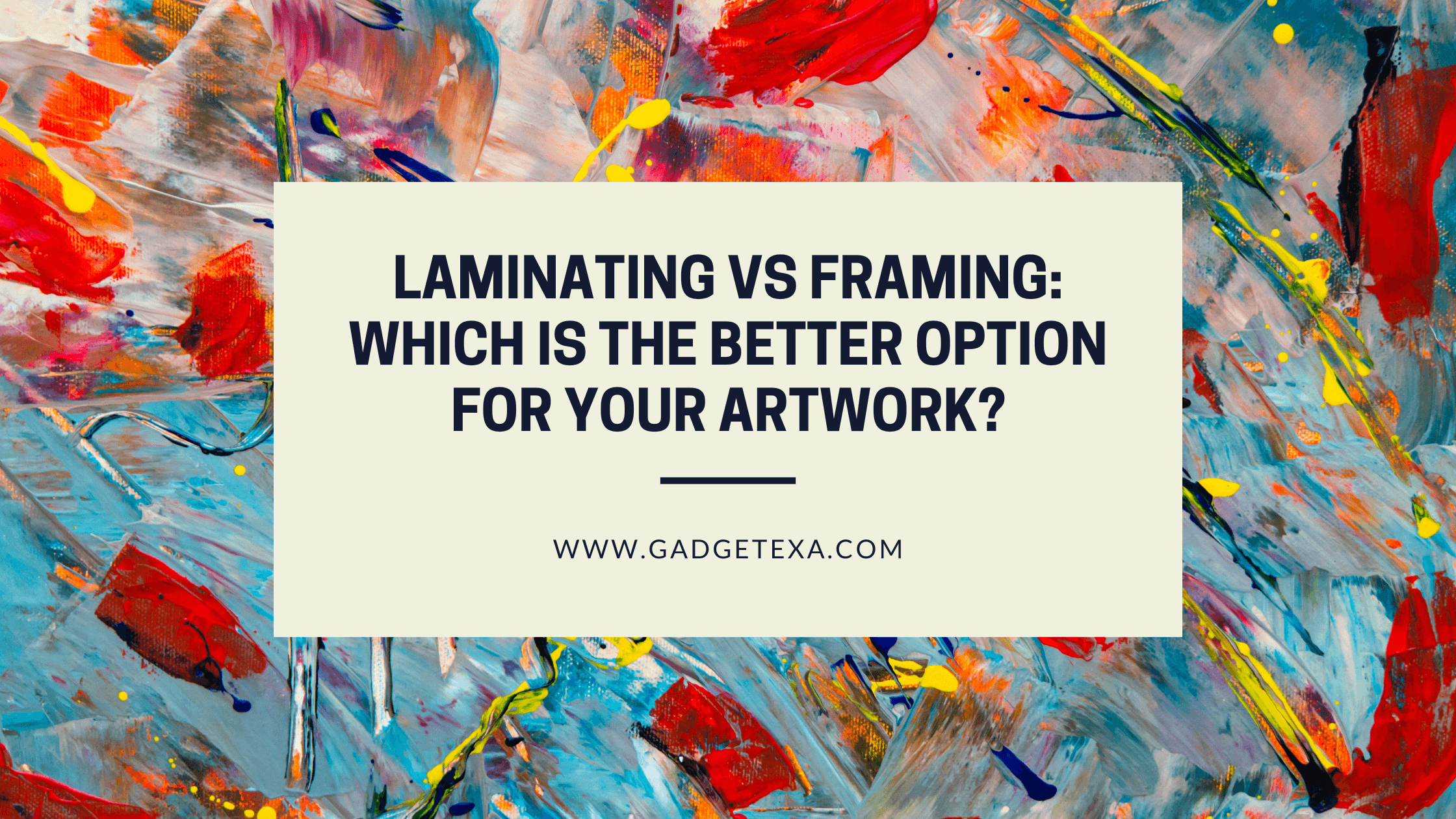Artwork is a valuable possession for many people, and it is essential to preserve it to maintain its quality and longevity. When it comes to protecting artwork, there are two primary options: laminating and framing.
Both of these techniques have their advantages and disadvantages, and choosing the right option can be a tough decision.
In this article, we will explore the benefits and drawbacks of laminating and framing, helping you decide which option is best for your artwork.
What is laminating?
Laminating is a process of sealing the artwork between two layers of plastic film. The lamination film protects the artwork from environmental factors such as dust, moisture, and UV light. Laminating is commonly used for posters, maps, and other types of documents.
What is framing?
Framing involves placing the artwork behind a protective glass or acrylic cover and mounting it on a sturdy frame. The framing adds a decorative element to the artwork and can enhance its overall appearance. It is a popular choice for paintings, photographs, and other types of artwork.
The benefits of laminating
Laminating is a popular choice for artwork that needs to be protected from environmental factors. The lamination film is highly durable and can withstand scratches and other types of damage. It also provides a clear and glossy finish that enhances the artwork’s colors and details. Additionally, laminating is a cost-effective option, and it is easy to clean and maintain.
The benefits of framing
The framing adds an elegant touch to the artwork, and it can be customized to match the decor of the room. It also provides excellent protection from environmental factors, such as dust, moisture, and UV light. The protective cover and sturdy frame keep the artwork safe and secure, reducing the risk of damage. Moreover, framing can add value to the artwork and make it more attractive to potential buyers.
The drawbacks of laminating
Although laminating is a cost-effective option, it may not be suitable for all types of artwork. Lamination film can be challenging to remove, which makes it unsuitable for artwork that may need to be re-framed or modified. It can also create a glare when exposed to direct light, which can make it difficult to view the artwork from certain angles. Moreover, lamination film can create a barrier between the artwork and the viewer, reducing the tactile and sensory experience of viewing the artwork.
The drawbacks of framing
Framing can be an expensive option, especially for large pieces of artwork. The weight of the frame and protective cover can also make it challenging to move or transport the artwork. Additionally, frames and protective covers may accumulate dust and debris over time, which can be difficult to clean and maintain. The glass or acrylic cover can also create reflections, making it difficult to view the artwork from certain angles.
The bottom line
Both laminating and framing have their advantages and disadvantages, and choosing the right option depends on your artwork’s specific needs and preferences. Laminating is a cost-effective and durable option for protecting artwork from environmental factors. The framing adds an elegant touch to the artwork and provides excellent protection, but it can be expensive and challenging to maintain. Ultimately, the decision comes down to personal preference and the specific needs of your artwork.
FAQs
Is laminating or framing better for preserving artwork?
Both laminating and framing can preserve artwork, but they offer different types of protection. Laminating protects artwork from environmental factors such as dust, moisture, and UV light, while framing provides protection and adds an aesthetic element to the artwork.
Can laminated artwork be re-framed?
Laminated artwork can be challenging to re-frame, as the lamination film is difficult to remove. It is recommended to avoid laminating artwork that may need to be re-framed or modified in the future.
Does framing add value to the artwork?
Framing can add value to artwork, especially if it is done professionally and enhances the artwork’s overall appearance. A well-designed frame can also make the artwork more attractive to potential buyers.
Can laminated artwork be cleaned?
Laminated artwork can be easily cleaned with a damp cloth or a mild cleaning solution. However, it is important to avoid using harsh chemicals or abrasive materials that can scratch or damage the lamination film.
How often should be framed artwork be cleaned?
Framed artwork should be cleaned regularly to prevent dust and debris buildup. It is recommended to use a soft, lint-free cloth or a microfiber cloth to gently wipe the glass or acrylic cover. Avoid using abrasive materials or harsh chemicals that can scratch or damage the protective cover.
Conclusion
Laminating and framing are two popular options for protecting artwork, and each has its advantages and disadvantages. Laminating is a cost-effective and durable option for artwork that needs protection from environmental factors, while framing adds an elegant touch and provides excellent protection.
Ultimately, the decision comes down to personal preference and the specific needs of your artwork. Consider the artwork’s size, type, and intended use when deciding which option is best. Whatever you choose, remember to handle your artwork with care and keep it in a safe and secure location.
If you found this article helpful and informative, don’t forget to check out our website gadgetexa.com for the latest news and reviews on all things tech


